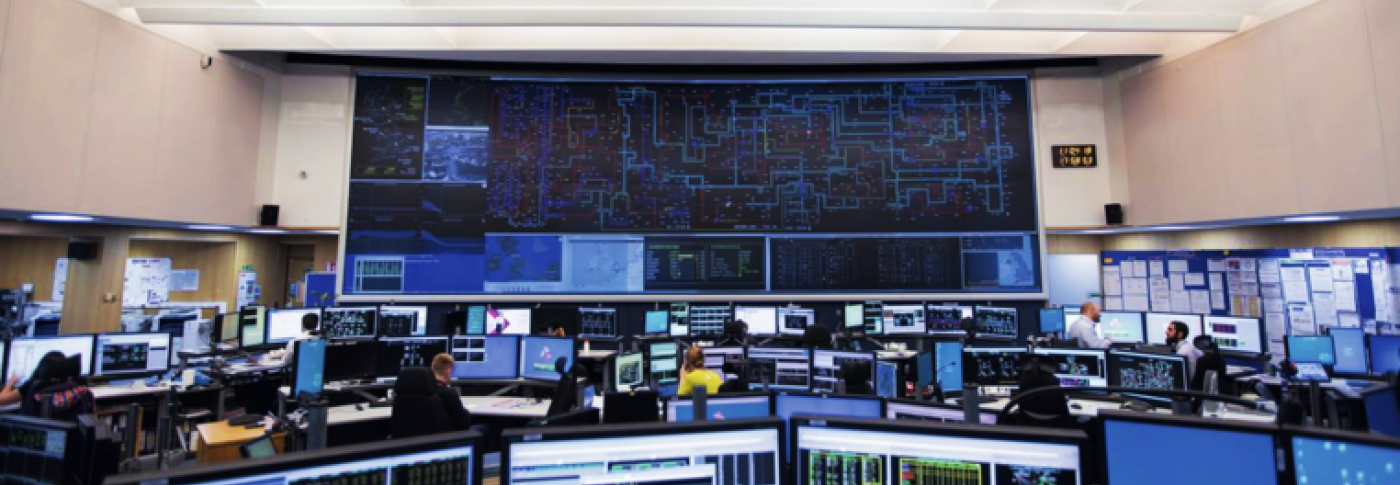
One year on, control room webinars go from strength to strength
14 Apr 2021 - 4 minute read
When the first lockdown hit, Great Britain’s electricity consumption changed in a big way. The ESO control room needed to make a lot of changes to keep the lights on and we wanted people to see first-hand what that involves, and so, the ESO Operational Transparency Forum was born. On the one-year anniversary, of these webinars, we talk to Hannah Kernthaler, Performance Review Manager, about how a simple idea has developed into a runaway success.
So how did this idea come about?
Around the time of the first lockdown, we knew there’d be a shift in demand on the system and we wanted to communicate our Covid plans. The idea was to show how we’d be operating during the pandemic, including communicating our business continuity plans to protect our staff.
There was such a great uptake. We could see that talking about demand, and how we were operating, was something people wanted – and it’s gone from strength to strength. We’ve also learnt that the ESO Operational Transparency Forum has become a great communication channel – attendees feedback during the Q&A, and help us shape future forums.
The webinars help us understand what our audiences care about and what’s bothering them. And it doesn’t always match up to what we’re thinking, so we’re learning all the time. It’s one of our ambitions to become a trusted partner and I think that offering this level of transparency and accountability will help us achieve it.
Control room webinars in numbers
We’ve run 53 weekly events for over a year
Answered over 1,750 questions
Reached over 1,000 unique attendees across the calls
Weekly average webinar score – 8.64
We’ve grown our stakeholder base to over 1,300 subscribers
What’s your role in running these events?
I first got involved last summer. My team looks at where the ESO is spending money, and we knew there’d be a lot of interest while so much was changing with the pandemic. It’s also a great way to communicate the drivers of cost, and where and how we’re making changes to the way we are operating, or what information we can provide as part of our transparency work.
How do you know what topics to include?
From the very first session, we allowed time for a decent Q&A section at the end. This would always fill more time than the actual presentation as there are so many questions – and it provides such valuable insight into our participants’ wants and needs.
I think the level of transparency you are showing and your engagement with the industry is very valuable. Please continue these webinars
The Q&A is key to helping us shape the content. Questions are so varied, and that’s no surprise given the diverse audience. We have attendees from all over the industry including larger market participants, Ofgem, electricity news media, also many smaller BM (balancing mechanism) and non-BM distributed energy resource operators and aggregators, and even some interest from academia.
The number of individual generating companies is much higher now with many operating in growth areas like batteries, wind farm and solar. They have a growing and varied interest in what we do. Many market participants have limited network knowledge and that’s where we come in, we provide the link between what the market is doing and the system behind it.
This is a great, informative, well-moderated webinar and is very useful
Give us a flavour of a typical session?
We’ve grown to have more than 100 participants each week. There are three regular slots now – on demand, costs and what we’re expecting to see in terms of constraints. That’s where our Networks team give an overview of what areas of the network will be affected and what this could mean in terms of potential balancing cost.
We also have guest slots where we run deep dives into topics such as how we manage thermal and voltage constraints, or what we do in tight margin situations.
The topics are driven by our participants. That’s the great thing about the webinars, we get so many varied questions but pick up on the themes. For example, we know when we experience significant faults on the network that we will get questions on it, so we try to have more information about the impact on operating the system ready to talk through. Recently we covered our low carbon record on the greenest ever Easter Monday.
Did you know it’d be such a success?
To be honest, when we started, we didn’t know exactly what to cover but we did know that we had to do something. Our attendees have really helped make it a success. There’s so much variety, it keeps us on our toes, and it’s difficult to answer all questions there and then. Anything we don’t know, we come back to and answer in the next session.
It’s a great way of communicating and of building trust through transparency while sharing expertise. They can understand what we do and how we do it, and we take away what they need to help them. It’s very much a two-way conversation.
The ESO’s Operational Transparency Webinars take place every Wednesday at 11am - you can register here.
You can find out more and watch past webinars and download presentations at the ESO Operational Transparency Forum website here.
